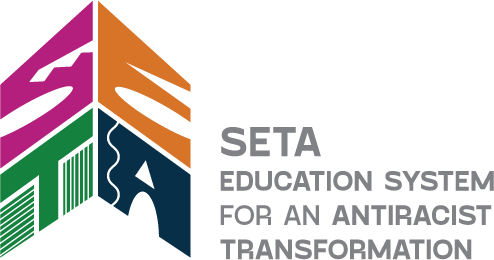Articles | Postado em: 24 April, 2025
Towards a global framework for anti-racist education
Action Aid International in partnership with the University of Bristol is seeking to facilitate connections and knowledge-sharing between anti-racist activists, organizations and academics across the world. Our aim is to learn from and be in conversation with this work in order to co-develop a framework for anti-racist education that can guide future policy and practice in education globally. In this short position paper, we set out why we think a global framework for anti-racist education is needed and what concepts of racism and anti-racism might help us work towards this goal.
We are mindful that we are, at this initial stage, limited to selected (and largely European colonial) languages which may hinder the fullest understanding of how people across the world experience racism and talk about anti-racism. We also acknowledge that there are some contexts that are less politically enabling than others to grapple with the structural forces of racial discrimination in education, for example, because of state censorship and political unfreedoms. We seek to galvanize a global movement precisely to support and enable greater collective recognition of racism and anti-racism across all national political systems.
Why do we need a ‘global’ framework for anti-racist education?
Racism is a structural force that is sustained through political systems and institutions. As UNESCO’s Declaration on Race and Racial Prejudice states ‘Racism includes racist ideologies, prejudiced attitudes, structural arrangements and institutional practices resulting in racial inequality’. Across the world, teachers, students, activists and educational organizations are working to address issues of racial discrimination across these different dimensions, making important interventions and building movements in their local and national contexts. Despite this, and despite the existence of the International Convention on the Elimination of All Forms of Racial Discrimination, global policy agendas for education rarely address racism directly, even when trying to tackle issues of educational inequity.
The silence around racism in global education policy arenas arguably allows racial injustice to perpetuate. It allows old colonial hierarchies to be sustained and new colonial relations to be formed. We seek to learn from, connect and amplify ‘local’ anti-racist initiatives across the world in order to hold open a space for recognition, dialogue and action at the level of ‘global’ policy fora. We seek to make tackling racism a priority in global agendas for educational equity, such that no roadmap for the future of education allows racial discrimination to continue. Our position is that an anti-racist education system benefits all students and societies; it is essential to individual and collective flourishing and well-being and is crucial for realising fundamental human rights.
In developing a ‘global’ framework for anti-racist education, we do not suggest there is a universal response to the varied forms and effects of racism in different contexts. Instead, by helping to bring existing anti-racist work into a global network, we set out to connect the specific experiences and different political nuances of both racism and its resistance in education, developing a set of shared concerns to guide dialogue and change at the global level. In particular, we recognize that any such ‘global’ framing of anti-racist education cannot be Western-centric. Below we elaborate on some of the ways we are, at this early stage, conceptualizing racism and anti-racism in education.
Conceptual underpinnings: racism and its different formations
‘Race’ is not a valid biological entity. This means that any claim that humans can be sub-divided into so-called ‘races’ is simply untrue – it has no foundation in fact. And yet, because people believe that such ‘races’ exist, the idea is uncritically accepted as reality by many. Social and political processes create and circulate the false idea that ‘race’ is real. Indeed, there is a long history of categorizing people into different groups, a process that can create ‘racial’ divisions and hierarchies within populations. Therefore, even though ‘race’ isn’t a ‘real’ thing, racism is real, it has very real effects: the divisions and hierarchies created through the idea of ‘race’ bolster inequities and domination at every level of society, including within education. The discrimination of groups on the basis of such hierarchies and divisions is what this project understands as racism.
Racism takes different forms in different contexts. The concept of ‘racialization’ has been put forward to capture the different social and political processes through which racial distinctions between different groups of people – and therefore the workings of racism – take on particular meaning. Racialization is not a benign expression of ‘difference’ between different groups. Rather, it can create brutal hierarchies as well as be a force for political identification and consciousness. For instance, racialization can occur when distinctions and hierarchies are made not only in relation to how people look (skin colour, facial features, etc.), but also in terms of things like religion, cultural practices, and language. This means that discrimination such as Islamophobia, casteism, anti-Blackness, xenophobia, anti-Indigeneity, and anti-Semitism, for example, are all forms of racism.
The concept of racialization allows us to consider how the hierarchic categorization of different groups has occurred throughout history and in different geopolitical contexts. This means it is also useful for understanding the structural character of racism. Racism can be experienced at an individual level (for example, the actions of a prejudiced teacher or student), or at an institutional level (for example, in which unequal treatment arises from practices or expectations established within institutions like schools), but these forms of racism are always also tied to wide historical and political structures of domination. For instance, European colonialism has been powerful in the invention of racial hierarchies that designate the idea of ‘white’ as superior. Such forces of racialization have been actively used to dispossess people, occupy lands, extract and control resources, and devalue lives, languages and cultures. Such racial hierarchies endure today and can be understood as the structural basis for racism against ‘non-white’ people the world over.
There will often be different forms of racism that interact with each other in any given context. This is because there are often multiple kinds of structural forces at play: ethnonationalism, Indigenous dispossession, neocolonialism, anti-Black violence, and so on. For example, the structures of ethnonationalism can and do create discrimination against minority groups within a country whose population as a whole has also been oppressed through structures of European colonialism, as can be seen across Africa, Latin America and Asia. In Brazil, for instance, there is systematic discrimination against Indigenous and Black populations. In India, casteism and Hindu nationalism create structural oppression against religious minorities, Indigenous and marginalized caste groups. The scourge of racism led to genocide against Tutsis in Rwanda and the ethnic cleansing of the Rohingya from Myanmar. It is also important to recognise how European and non-European colonialism actively oppresses populations today, continually acting as a force of racialization. Take, for example, the systematic oppression of the Uyghurs in China or the ongoing dispossession of Palestinians under Israeli settler colonialism.
Furthermore, racism does not act alone. It intersects with other systems of domination – classism, patriarchy, ableism, and so on. Discrimination thrives in an environment where people are materially and physically insecure. The fight against racial discrimination is therefore also a fight for solidarity against poverty, alienation and inequality. Therefore, it is important in any ‘global’ framework for anti-racist education that the interactions between different structures of racism in specific geopolitical contexts are fully considered.
What is anti-racism?
People are not born racist. Rather, racial prejudice is learned. For this reason, it is important to know that we can fight against racism and all forms of discrimination. Anti-racism encompasses actions and efforts that resist racism and strive for racial equity. It addresses the structural nature of racism – how racist practices are embedded within and reproduced in social systems such as education. Since different systems of racialized power exist in different contexts, anti-racist work adopts context-specific responses, for example, pro-Black, anti-casteism and actions defending Indigenous rights. However, given the global experience of racialized discrimination based on understandings of ‘racial’ difference, anti-racist allegiances can also be cross-national.
Anti-racism maintains its focus on race and racism, making visible and challenging racialized power structures. This distinguishes it from other areas of policy and practice such as inclusion and diversity, which often fail to adequately provide a critique of the racist social structures underpinning societal interactions. Critique is significant for challenging the status quo – the ideas, knowledge, social relationships and everyday practices that we accept as normal. The critical stance in anti-racist approaches provides all those involved in education systems with insights into racialized social dynamics. For example, it develops race-conscious teachers, administrators, teacher educators, researchers and data analysts, policymakers and pupils who question the status quo, querying issues such as curriculum content, assessment practices, institutional structures and pupil outcomes.
What does anti-racist education involve?
Anti-racist education involves disrupting the processes that reproduce racism and racist outcomes. This demands a system-wide change. It means embedding anti-racist perspectives, approaches, and financing at the heart of system development, for example: teacher training, recruitment, progression; teaching pedagogies; responding to student voice; curriculum development; assessment; and, educational financing to name a few. Teacher education needs reform in many national contexts to equip schoolteachers with skills, knowledge and resources to understand how processes of race and racism work in society. Closely related, anti-racist pedagogies (approaches to teaching) become possible when teachers, across different education sectors, bring a consciousness of racial dynamics to their classrooms. This makes supporting educators to develop knowledge and skills for anti-racist practice paramount to disrupting cycles of racial inequities in education.
An anti-racist curriculum means dismantling knowledge systems in order to expose dominant ways of understanding, representing and explaining the world. How is curriculum content selected? How do certain knowledge systems gain value of place over others? How have certain national histories and identities been prioritized in curricula whilst others have been hidden or erased? Anti-racism helps ask such questions in order to understand the relationship between knowledge and racial justice. It seeks to challenge how ideas of racial superiority can infuse the curriculum in explicit and implicit ways, reinforcing the ideas, knowledge, identities and interests of dominant groups.
An anti-racist lens can also help us scrutinize assessment practices. For instance, the common practice of ‘tracking’ or ‘setting’ or ‘streaming’ children into so-called ‘ability groups’ in schools, often through standardized assessment exercises, has been widely shown to entrench racial hierarchies. Such questionable yet widespread prevalence of educational hierarchies arguably works in service of racialized formations of difference. Among other things, anti-racist assessment practices might aim to support the language, cultural and knowledge backgrounds of all students.
An anti-racist lens also needs to be used when analysing education financing from local to global levels. It means, for example, recognising the neocolonial nature of the global financial architecture, with institutions like the IMF and World Bank, forged before most African countries achieved independence, continuing to impose austerity policies that undermine the financing of education. It means challenging the global tax rules, set by the OECD club of rich nations, which continue to facilitate plunder and illicit financial flows – leaving public services chronically underfunded. It also means looking at the disproportionate power of the ‘donor community’ in shaping the direction of education reform in many parts of the world – that limit the accountability of governments to their own citizens and have consistently failed to acknowledge anti-racism as a priority in education systems.
Hence, anti-racism in education is not only concerned with racism as it is experienced between individuals. It is also concerned with racism at the level of systems, structures and institutions; with the everyday ways in which access, opportunities and outcomes in education disadvantage racially marginalized groups.


